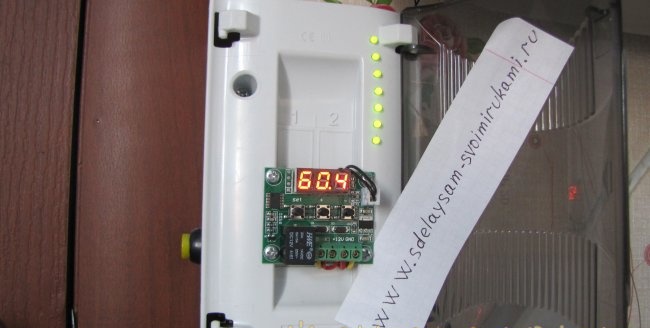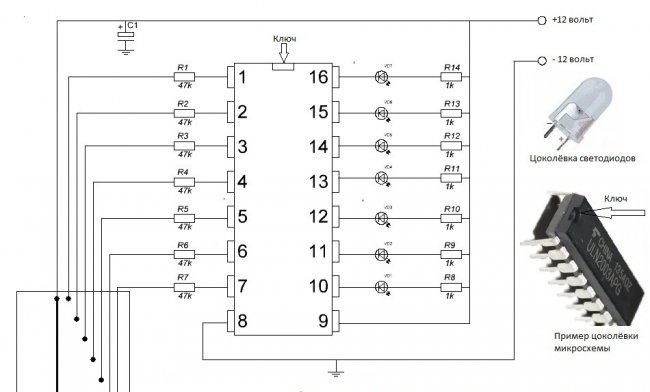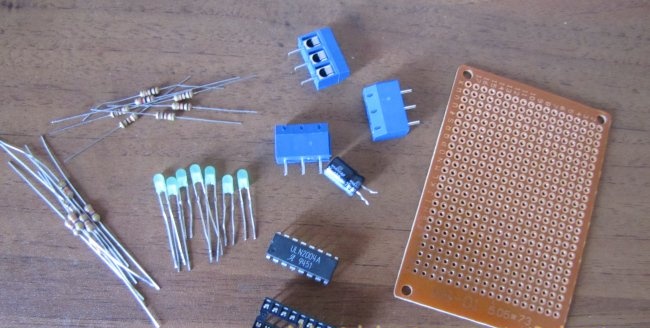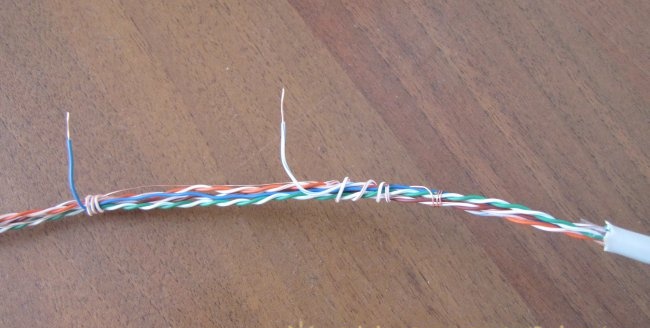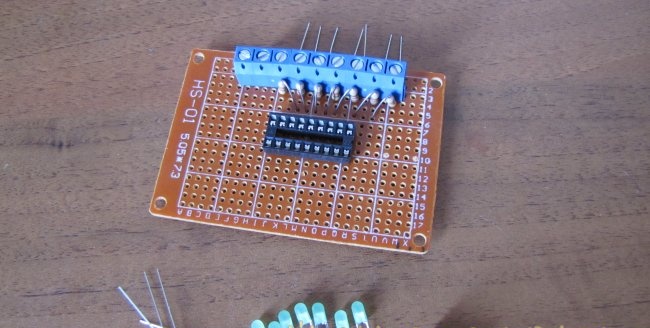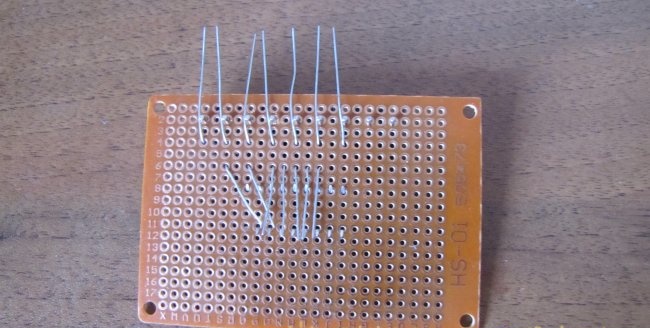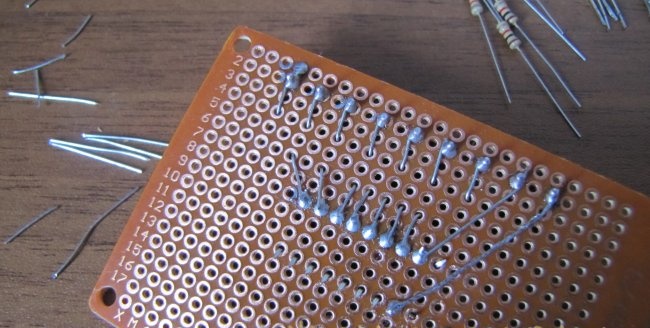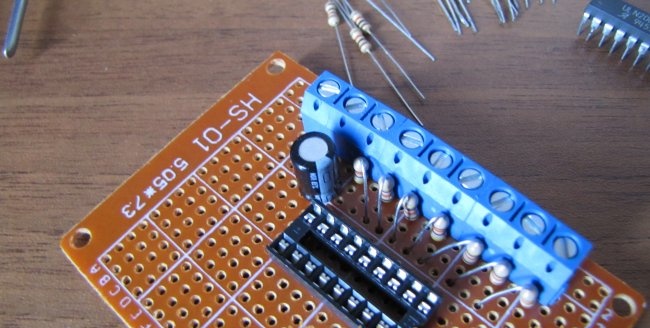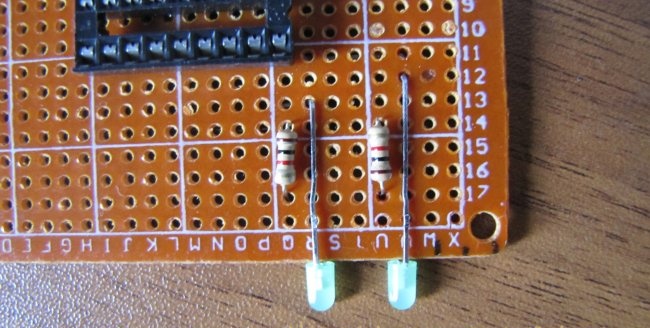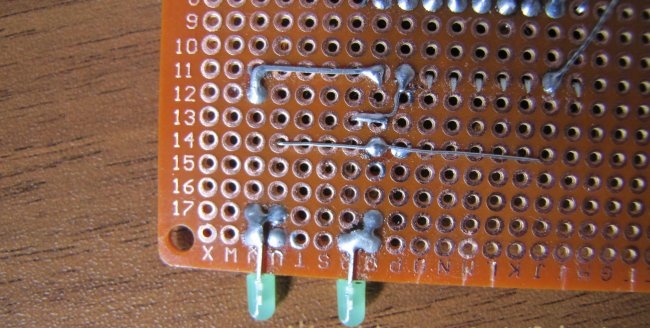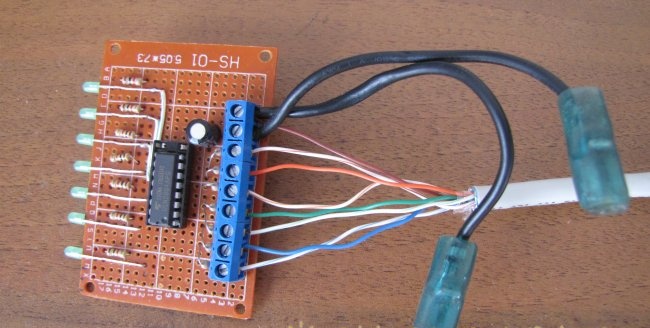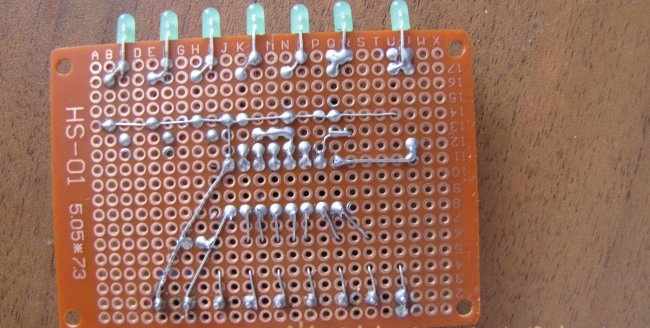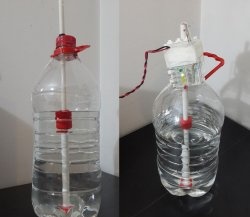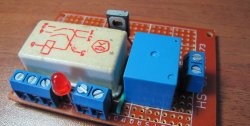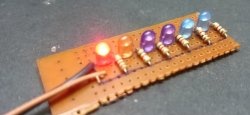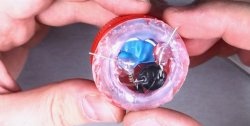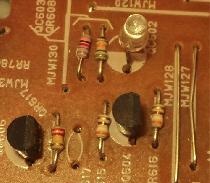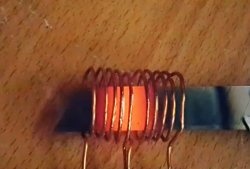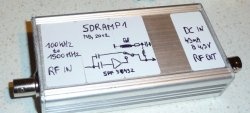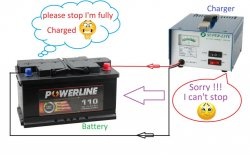Almost anyone who knows how to hold a soldering iron can make a water level sensor with their own hands. And this article will help you, step by step, using photographs, to make a water level indicator in a tank with your own hands from simple and common parts. This device works very well and is very reliable in operation. If assembled correctly from serviceable parts indicated on the rating diagram, it does not require further adjustment and will work immediately when a 12-volt power supply is connected.
First we need to understand the water level diagram that we will make.
DIY water level diagram
The first step, after familiarizing yourself with the photo: diagram of the water level in the tank with your own hands, is to prepare parts and materials. We need a ULN2004 chip, it can be purchased at radio store or in China, on Aliexpress. The price for one chip in a radio store and for ten on Aliexpress are approximately the same, so choose the one that suits you, the only inconvenience is that you need to wait about a month or more for a package from China.
Parts collected
LEDs You can use signal signals of any color you like, with a diameter of 4 - 5 millimeters. Tsokolevka LEDs and the microcircuits are on the diagram.
Capacitor C1 needs a polar 100 microfarad 25 volt, or larger parameters (whatever is available).
Resistors (resistance) with a power of 0.125 to 0.5 watts or more (the higher the power, the larger the dimensions and will not be very beautiful, this also applies to the capacitor).
Resistors R1 - R7 with a resistance of 47 kohms (a little less or a little more - not critical).
Resistors R 8 – R14 with a resistance of 1 kohm (approximately). The greater the resistance, the weaker the glow will be Light-emitting diode and vice versa, but too little resistance may result in output LED out of service.
You don’t have to make a printed circuit board, but using a breadboard like mine costs a penny, especially in China. The price ratio in the radio store and China is 5 - 10 to one.
The cable to the water level sensors can be used with any eight-wire signal cable (in stores that sell alarm devices, there are any). The ends of the cable, placed in water as a level sensor, should be stripped of insulation to a length of 5 - 10 millimeters and the stripped ends should be tinned (coated with tin using a soldering iron) to reduce the oxidizing effect of water on the metal. The positive electrode must be made of stainless steel (for example, a teaspoon), and the place where it connects to the wire must be protected from water using a glue gun. If the contact point is not protected, then in a short time the electrochemical reaction will consume it. The pitch between the sensors must be calculated based on the depth of the container. If you need to measure a greater depth of water and want to place sensors more often, then you can make one more or even several similar water level control circuits and place them sequentially in the container.The design of sensors can be very diverse and depends only on your imagination, the main thing is to follow the general principles.
Any terminal blocks, but ease of connection and use is important.
For the microcircuit, it is best to use a connector for solderless placement. You can solder this socket and not be afraid that you will overheat the legs or be affected by static electricity. If the microcircuit fails for some reason, you can replace it in a couple of seconds. Such a panel costs a penny.
It is better to use Russian tin (wire with rosin). I have never seen good Chinese tin.
After collecting the parts, you need to think about placing the parts on the board. I did it as in the photo, and you are free to arrange them to your liking. The main thing is that the arrangement of parts meets the goals of reducing the number of jumpers and soldering, and most importantly, ease of use. Accuracy in assembling the circuit is not the least important thing, no need to rush like me and everything will be beautiful. So let's get started.
The water level indicator in the tank can be powered from any 12 volt battery (even an old one, as long as it provides at least 10 volts), for example, from a computer uninterruptible power supply unit, and now they sell a lot of all sorts of low-power ones. Or you can use regular batteries at the dacha. If you connect them in series 8 pieces of 1.5 volts = 12 volts. Quite enough. And if you connect the batteries through a button so that the circuit only works when you press the button, then this power will last for many years.
All that remains is to test the water level indicator in the tank and the main thing here is not to confuse the plus with the minus. It is better to connect power wires of different colors.Plus is always indicated in red, and minus in black, if you get used to this, you won’t be confused.
